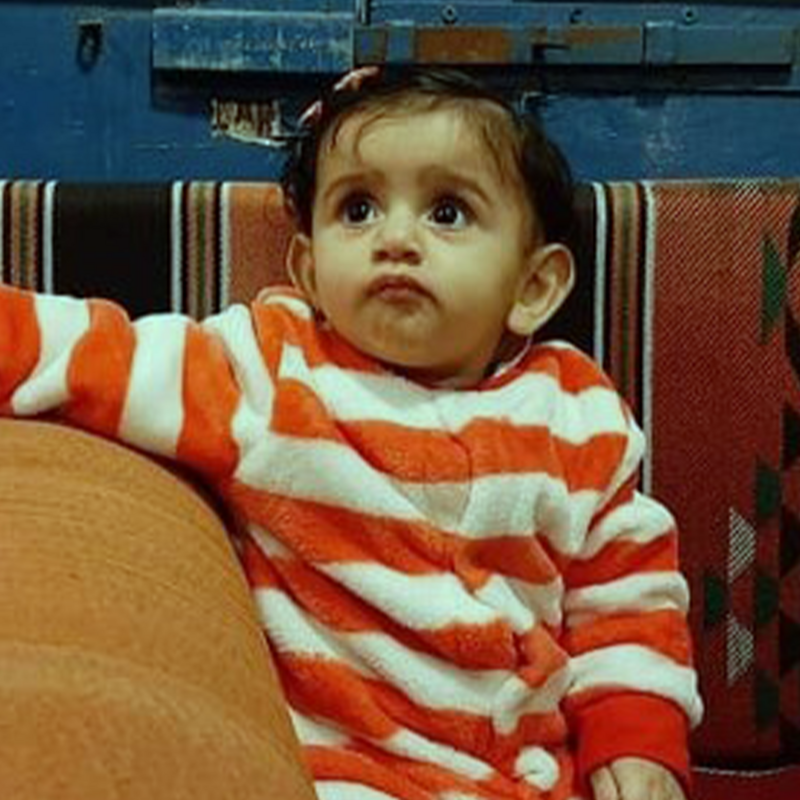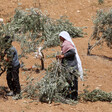The Electronic Intifada 12 June 2021

Israel’s 11-day bombardment of Gaza in May left the coastal enclave in ruins… once again.
More than 250 Palestinians were killed, including at least 67 children.
About half of those killed were civilians, according to UN monitoring group OCHA, and 245 were killed by Israeli fire. Some were killed as a result of rockets fired from Gaza that fell short.
Multiple generations of multiple Palestinian families were in some cases almost completely wiped out. Fourteen families lost three or more members in a single attack, while 19 families lost two or more members.
In some instances, only one member of a nuclear family survived. In one case, 21 members of the same family were killed.
This is Part II of a series that documents the names, faces and stories of some of the victims of Israel’s May 2021 attack on Gaza. Read Part I here and Part III here.
Israel obliterated whole families in their homes during its 11-day attack on Gaza in May, some removed entirely from the population registry.
Parents and children, cousins and siblings, grandparents, aunts and uncles were killed together when Israeli warplanes bombed residential buildings and private homes without warning the families inside.
Killing multiple members of multiple families has become a hallmark of Israeli wars on Gaza and has led to Palestinians there resurrecting some grisly traditions.
“People in Gaza have been reviving an old tradition in which some families exchange their kids, so that in case some get bombed, the others would live,” Twitter user Muhammad Qudaih wrote amidst the assault.
“My family is spread out over three houses in three different locations as if they’re trying to avert a massacre.”
During Israel’s 2014 assault on Gaza, more than 140 Palestinian families lost at least three members in a single attack.
“The numerous incidents then and today attest that these were not mistakes,” Amira Hass of Tel Aviv daily Haaretz wrote in May.
“The bombing of a house while all its residents are in it follows a decision from higher up, backed by the examination and approval of military jurists.”
Hass reminded readers that the “Palestinian population registry, including that of Gaza, is in the hands of the Israeli interior ministry,” which includes the names, ages and addresses of Palestinians living in Gaza.
The fact that the Israeli army and Israel’s domestic spy agency call some Palestinian building owners before they bomb them shows that “the army knows the number and names of children, women and elderly who live in every residential building it bombs for any reason,” and that it has “current phone numbers for people in each structure slated for destruction.”
But they only call some owners.
Abu Hatab family, five members killed, and al-Hadidi family, five members killed

Mourners attend the funeral of the al-Hatab and al-Hadidi families at Beach refugee camp on 15 May.
ActiveStillsMaha Muhammad Abu Hatab was visiting her brother Alaa Muhammad Abu Hatab’s house for Eid on 15 May when it was hit with three Israeli missiles, according to Al Mezan, a human rights group in Gaza.
There was no warning.
“My wife and kids went to share the Eid blessings with her brother. They got dressed and went to her brother’s house, innocent children,” Muhammad al-Hadidi said of his wife Maha and their children.
The attack, at 1:30 in the morning, killed Maha and her children, as well as Alaa’s wife and children.
Maha was 34. Her children Suhayb al-Hadidi was 12, Abd al-Rahman, 7, and their brother Osama was 5.
Their 10-year-old brother Yahya was later also confirmed killed in the attack.
Their cousins Yousif Abu Hatab, 10, and his siblings 9-year-old Bilal, 7-year-old Mariam and 5-year-old Yamen were all killed in the strike. Their mother, Yasmine Muhammad Abu Hatab, 30, was also killed.
Only Muhammad al-Hadidi’s 5-month old son Omar survived the blast.

Muhammad al-Hadidi comforts his infant child Omar at Gaza City’s al-Shifa hospital on 15 May.
APA imagesAl-Tanani family, six members killed, al-Madhoun family, two members killed
In the early hours of 13 May, Israeli warplanes dropped 20 missiles on a densely populated neighborhood in Beit Lahiya.
The blast killed six members of the al-Tanani family.
Rafat Muhammad Ismail al-Tanani and his wife Rawiya Fathi al-Tanani were killed along with four of their children.
Ismail, 7, Amir, 6, Adham 4 and their 2-year-old brother Ahmad were all killed in the attack, according to Defense for Children International Palestine.
A seventh member of the family is still missing, DCIP reported.
The same blast killed the wife and husband who owned the building where the al-Tanani family was renting their home: Abd al-Rahim Muhammad al-Madhoun, 63, and his wife, Halima Ali Abu Sharakh, 66.
Stores, lawyers offices, an education center and nine houses were completely destroyed in the strikes.
Nearby streets were also destroyed, along with water pipes and sewer systems, as well as telephone lines and electricity.

Mina Sharir succumbed to her wounds on 18 May. (DCIP)
Al-Sharir family, four members killed
An Israeli missile hit a two-story residential building in al-Manara neighborhood in Gaza City on the second day of Israel’s onslaught, killing Iyad Fathi Sharir, 44, and his 40-year-old wife Layali Taha Sharir.
Their 15-year-old daughter Lina Iyad Sharir was also killed in the blast.
After being hospitalized with severe burns after the strike, their 2-year-old daughter Mina Iyad Sharir nearly survived the strikes on 11 May.
But the toddler died from her wounds a week later on 18 May, joining her parents and sister in death.
Al-Attar family, four members killed
On 14 May, Israeli warplanes dropped two missiles on agricultural land near a home in Beit Lahiya, killing three children and their mother.
Islam Muhammad al-Attar, 8, his 6-year-old sister Amira Muhammad al-Attar and their infant brother Muhammad Zain al-Din Muhammad al-Attar were all killed in the attack.
Their 26-year-old mother Lamia was also killed.
The family was on the ground floor of their home, according to DCIP, and a concrete pillar fell on them. Their bodies were pulled from under the rubble hours after the attack.

Lamia al-Attar and her three children. (Amnesty International)
Lamia’s father, a civil defense officer, told Amnesty International that he arrived at the scene with an ambulance and a rescue team after a relative called and told him of the attack.
“I went to the three-story house, where 20 people live, and I tried to find someone, but I couldn’t,” Hasan al-Attar told Amnesty.
“Then the rescue team came to help and eventually found my daughter, a mother of three, with her children, one of them a baby, under one of the pillars of the house. They were all dead,” he added.
“It seems the rest of the residents managed to escape the bombing and reached the hospital. I was shocked.”
Al-Talbani family, three members killed
In the early hours of 12 May, Israeli warplanes fired two missiles at a five-story apartment building in Tal al-Hawa neighborhood in Gaza City, killing at least five Palestinians.
Reem Saad Kamel Saad, 31, a pregnant mother, was killed alongside her 5-year-old son Zaid Muhammad al-Talbani.
Her toddler Mariam Muhammad al-Talbani’s remains were only found the day a ceasefire was declared.
“The Israeli attack on Mariam’s home was so huge and violent, and she was so tiny, that it took nine full days to find her body under the rubble,” Miranda Cleland of DCIP wrote on Twitter.
The children’s father, Muhammad Odeh al-Talbani, was reportedly injured.
Three others were killed in the same attack: Wael Abd al-Karim Issi, 40, Muhammad Hasan al-Qahwaji, 43, and Hala Hussein al-Rifi, who was 13 years old.

Iyad Abdul Fattah Salha with his daughter Nagham. (Flickr)
Salha family, three members killed
Iyad Abdul Fattah Salha was home with his wife and toddler one afternoon when an Israeli missile struck on 19 May, killing them all.
Salha was disabled and used a wheelchair.
His wife Amany Yusef Imhawish was eight-months pregnant.
Their toddler daughter Nagham Iyad Salha was killed along with them.
It remains unclear “whether the missile was fired by an Israeli warplane or a weaponized aerial drone,” according to DCIP.
Tamara Nassar is associate editor of The Electronic Intifada.





